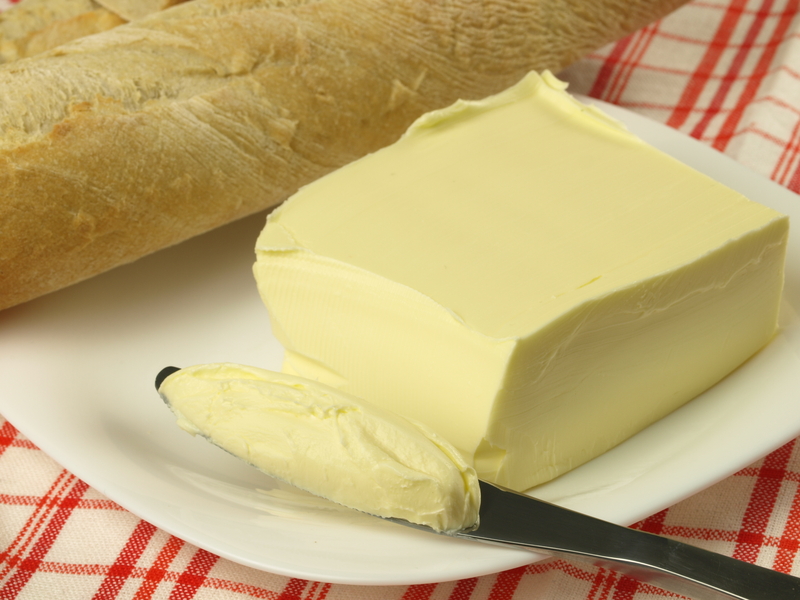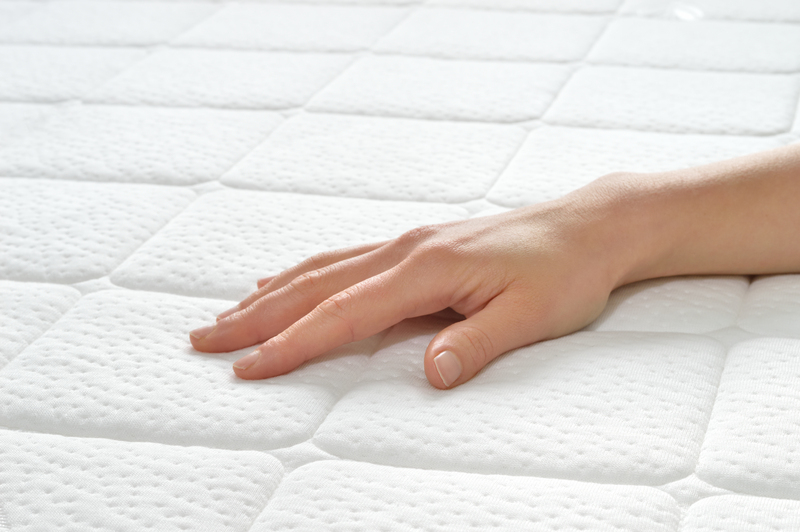Revitalize Your Stovetop with These Burnt-on Residue Cleaning Methods
Posted on 22/08/2025
Revitalize Your Stovetop with These Burnt-on Residue Cleaning Methods
Does your stovetop have stubborn, burnt-on residue that just won't budge? Over time, even the most careful cooks face the challenge of burnt food, tough grease, and unsightly stains. A clean stovetop not only enhances your kitchen's appearance, but also improves safety and prolongs the life of your appliance. If you're looking for the most effective burnt-on residue cleaning methods for your stovetop, you're in the right place.
Ready to restore your stovetop's shine? Dive into our comprehensive guide for revitalizing your cooktop with proven, easy and eco-friendly techniques.
Why is Regular Stovetop Cleaning Important?
A stovetop is the centerpiece of most kitchens, enduring spills, splatters, and burnt-on messes.
- Prevents residue buildup: Regular cleaning prevents layers of grime that are harder to clean as they accumulate.
- Promotes hygiene: Leftover food can attract bacteria and pests, leading to health concerns.
- Improves cooking efficiency: Burnt residue interferes with heat transfer, affecting cooking performance.
- Enhances appearance: A spotless cooktop keeps your kitchen inviting.
- Extends appliance lifespan: Proactive cleaning helps prevent permanent staining and damage.

Understanding Burnt-on Residue: What Causes Stovetop Buildup?
Burnt-on residue forms when food, oils, or sauces spill during cooking and are exposed to repeated heat cycles. Over time, these stains become hardened and carbonized, making regular cleaning difficult. Different stovetops--whether gas, electric, or glass ceramic--can all suffer from these deposits, though the removal techniques may vary slightly.
Essential Supplies You'll Need
- Non-abrasive sponges or microfiber cloths
- Scraper (plastic or razor blade, for glass tops only)
- Baking soda and white vinegar
- Dish soap (preferably degreasing)
- Hydrogen peroxide (for heavy-duty cleaning)
- Lemon juice
- Spray bottle
- Gloves (to protect your hands)
Having these supplies ready will make the cleaning process much smoother and more effective.
General Precautions Before You Start
- Always allow the stovetop to cool completely before cleaning.
- Test any cleaner on a small, inconspicuous area first.
- Use gentle pressure to avoid scratching, especially on glass and ceramic surfaces.
- Follow manufacturer instructions if available.
Effective Methods to Clean Burnt-on Residue from Stovetops
Below are multiple cleaning techniques for burnt stovetops. Choose the methods that best suit your stovetop type and the severity of the residue.
1. The Baking Soda and Vinegar Magic
Baking soda and vinegar are the dynamic duo of natural cleaning. The mild abrasiveness of baking soda combined with the fizzing power of vinegar can break through stubborn, burnt-on grime.
- Sprinkle baking soda liberally over the affected spots.
- Fill a spray bottle with white vinegar and mist over the baking soda, causing it to fizz.
- Let it sit for 15-20 minutes to loosen the burnt-on food and stains.
- Use a non-abrasive sponge to gently scrub the area in a circular motion.
- Wipe away residue with a damp microfiber cloth, then dry thoroughly.
2. Using a Plastic Scraper or Razor Blade (for Glass Stovetops)
This method is especially effective for glass or ceramic cooktops with stubborn, baked-on residue.
- After applying a paste of baking soda and water, let it sit for 10-15 minutes.
- Holding a plastic scraper or razor blade at a 45-degree angle, gently scrape the burnt areas.
- Be patient and careful to avoid gouging or scratching the glass surface.
- Wipe clean with a damp cloth.
Note: Always use a plastic scraper unless the manufacturer recommends a razor blade for your cooktop.
3. The Dish Soap and Hot Water Soak
Sometimes, old-fashioned soaking does wonders.
- Mix several drops of degreasing dish soap with hot water.
- Saturate a towel or thick paper towels with the soapy solution and lay it directly over the burnt-on residue.
- Allow the towel to sit for 20-30 minutes to loosen the grime.
- Use a sponge to scrub gently; rinse and repeat if needed.
4. Hydrogen Peroxide and Baking Soda Paste
For exceptionally tough, carbonized residue, try making a paste of hydrogen peroxide and baking soda.
- Mix hydrogen peroxide and baking soda to form a thick paste.
- Spread it onto the affected areas and let it sit for at least 30 minutes.
- Scrub gently with a sponge or cloth. The mixture's fizzing action helps break down the toughest grime.
- Wipe away residue and rinse well.
5. Commercial Stovetop Cleaners
There are specialty cleaners designed to tackle burnt-on stovetop stains. Look for products labeled safe for your stovetop type (gas, electric, or glass).
- Follow the instructions on the cleaner precisely for optimal results.
- Always wipe down with a damp cloth to remove any chemical residue afterwards.
6. Lemon and Salt Scrub (Natural and Deodorizing)
Lemon's natural acidity plus salt's abrasiveness create a powerful natural scrub that lifts stains and leaves your stovetop smelling fresh.
- Cut a lemon in half, dip it in course salt, and scrub directly onto burnt residues.
- Leave the mixture on for 10 minutes for tough spots.
- Wipe with a damp cloth and polish dry with a soft towel.
Specialized Tips for Different Stovetop Types
Gas Stovetops
- Remove grates and burner caps before starting.
- Soak removable parts in hot, soapy water for 15 minutes. Scrub them with a brush for deep cleaning.
- Use a toothpick or soft brush to clean burner holes, ensuring proper gas flow.
- Wipe the main surface using any of the above mentioned residue removal methods.
Important: Make sure all burner parts are completely dry before reassembling. Dampness can cause uneven flames or ignition problems.
Electric Coil Stovetops
- Unplug coils and ensure complete coolness before cleaning.
- Never submerge coils in water. Wipe with a damp cloth and mild soap.
- Remove drip pans and soak in hot, soapy water to loosen grime.
- Scrub residue using a non-abrasive sponge or baking soda paste.
Pro tip: Wrap drip pans with aluminum foil after cleaning to make future spills easier to manage.
Glass or Ceramic Stovetops
- Use only non-abrasive materials to avoid scratching.
- Plastic scrapers or razor blades should be used cautiously to lift off burnt patches.
- Cream-based commercial cleaners designed for glass surfaces can give a polished finish.
- Wipe with a soft microfiber cloth for a streak-free shine.
Avoid: Steel wool, abrasive scrubbers, or harsh chemical cleaners.
Advanced and Time-Saving Techniques
Overnight Baking Soda Paste Soak
For the hardest residues, make a thick paste of baking soda and water, spread it over the burnt area, cover with a damp towel, and let it sit overnight. In the morning, scrub gently and wipe clean.
Steam Cleaning
For a chemical-free clean, boil a pot of water on the stovetop to let steam loosen stubborn residue. Turn off the burner, then wipe away the softened gunk with a towel.
What Not to Do When Cleaning Burnt Stovetops
- Avoid using steel wool or metal brushes - They scratch and damage most cooktops.
- Don't use harsh chemicals like oven cleaner unless the manufacturer says it's safe.
- Never pour water on a hot stovetop - It might cause cracking or warping.
- Don't try to chip off residue with knives or other sharp tools.
Maintaining a Clean Stovetop: Prevention Tips
- Wipe spills as soon as possible--fresh messes are much easier to remove.
- Give your stovetop a quick wipe daily, even if it seems fairly clean.
- Deep clean once a week using the above techniques.
- Keep burner parts dry and in good condition for optimal performance.

Frequently Asked Questions
Can I use vinegar on all stovetops?
Vinegar is safe for most surfaces, but avoid it on cast iron or any surface explicitly noted by your manufacturer as vulnerable to acidic cleaners.
Is it safe to use baking soda on glass stovetops?
Yes! Baking soda is non-abrasive and works great on glass and ceramic cooktops, but always use a soft apply method and avoid heavy scrubbing.
How often should I clean my stovetop to avoid burnt residue?
Ideally, wipe down after every use and deep clean weekly or as needed--especially after boil-overs or messy cooking sessions.
What if I can't remove the burnt stains?
Persistent stains may require repeated treatments. Avoid using harsh chemicals or tools that can damage the surface. If nothing works, consult your stovetop's manufacturer for recommendations or consider professional cleaning.
Revitalize Your Kitchen: Enjoy Your Gleaming, Burnt-Free Stovetop
With these comprehensive stovetop cleaning methods for burnt-on residue, you can easily restore your cooktop to its former glory without harsh chemicals or expensive cleaners. Whether you choose eco-friendly home remedies or specialized products, consistency is key. Regular maintenance and the right techniques will keep your kitchen clean, hygienic, and beautiful for years to come.
Don't let burnt-on messes dampen your culinary adventures. Try these techniques today and revitalize your stovetop with confidence!




